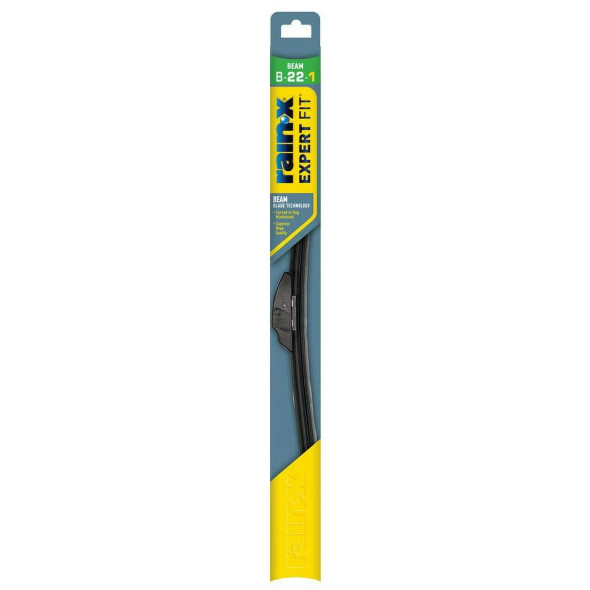Description
Product details
The new Rain-X Expert Fit blades are a great option for maintaining the wiper blade technology and design originally installed on the vehicle. For the last 40 years, Rain-X has provided drivers with products to help them outsmart the elements. All Rain-X products are designed to help keep our customers a confident step ahead of Mother Nature on the road. Rain-X Expert Fit Beam Wiper Provides original equipment quality design for vehicles originally installed with beam blade technology. Quality beam blade solution that meets or exceeds original equipment manufacturer’s standards. Curved to provide a smooth wipe. Aerodynamic spoiler to reduce wind lift. Premium Beam Blade Technology Curved design provides a smooth, virtually streak-free wipe Superior Wind Lift Performance Asymmetrical spoiler provides best wind lift reduction at high speeds Quiet, Chatter-free Wipe Tec3 rubber with a protective coating provides smooth, quiet wipe and protects against elements Good Durability Optimal curvature and pressure distribution for more even wear and extended blade life Wiper Blade Information and Maintenance Rain-X Tips and Information to Help You Outsmart the Elements Have You Changed Your Wiper Blades Lately. Wiper blades should be replaced every six months to a year or as soon as you notice a difference in driving visibility. When wiper blades no longer make proper contact with the windshield surface, they can begin to squeak, chatter, skip, smear, or streak reducing driving visibility. An easy way to remember to proactively change your wiper blades is to replace them on Groundhog Day. Whether the Groundhog predicts six more weeks of winter or early spring, new wiper blades are necessary to prepare you for 6 weeks of harsh winter driving conditions or 6 weeks of Spring showers.
- Broken frame: Detachment of frame arms at joints or connection points
- Metal Corrosion: Especially at joints and claws.
- Visible cracks, tears, and missing pieces in the rubber squeegee’s edge.
- Flex the rubber squeegee back and forth to see if it is still flexible. Aged squeegees will have difficulty conforming to the shape of your windshield and create streaks.
- Check the squeegee wiping edge for rounded edges which can prevent the wiper blade from making strong contact with the windshield and reduces wipe quality.
- Tug to ensure wiper blade has been securely installed on the wiper arm.
- Check that squeegee is secure in the wiper frame.
- Sun: Ultraviolet light and ozone deterioration
- Oil: Car waxes and exhaust hold rubber-deteriorating oil
- Airborne debris: Sand, mud and dust carried in the wind
- Moisture: Acid rain and salt water (in moist air both near the shore and inland)
- Streaking occurs when the rubber squeegee dries, hardens, and cracks. It can also be caused by tree sap, road tar, and other foreign substances collected on either the glass or the blade.
- Skipping occurs when the blade develops a curvature from lack of use (e.g. Left in the parked position for an extended length of time).
- Wearing occurs with extensive use and is when the rubber edges are rounded instead of squared.
- Splitting is caused when the sun’s ultraviolet rays penetrate the rubber squeegee, causing it to breakdown and separate from the frame.
- Bent Refill Vertebra and Bent Frames cause inconsistent contact with the glass surface, creating streaking or skipping.
- Clean your windshield every time you fill your gas tank.
- Gently wipe the rubber squeegee with a damp paper towel to remove any loose dirt or oil.
- Never use your windshield wipers to de-ice your windshield. Instead, either use an ice scraper or use your defroster to melt snow and ice.
- Pull your wiper blades away from the windshield during winter months to prevent ice build-up on the rubber squeegee and prevent them from sticking to the windshield.








